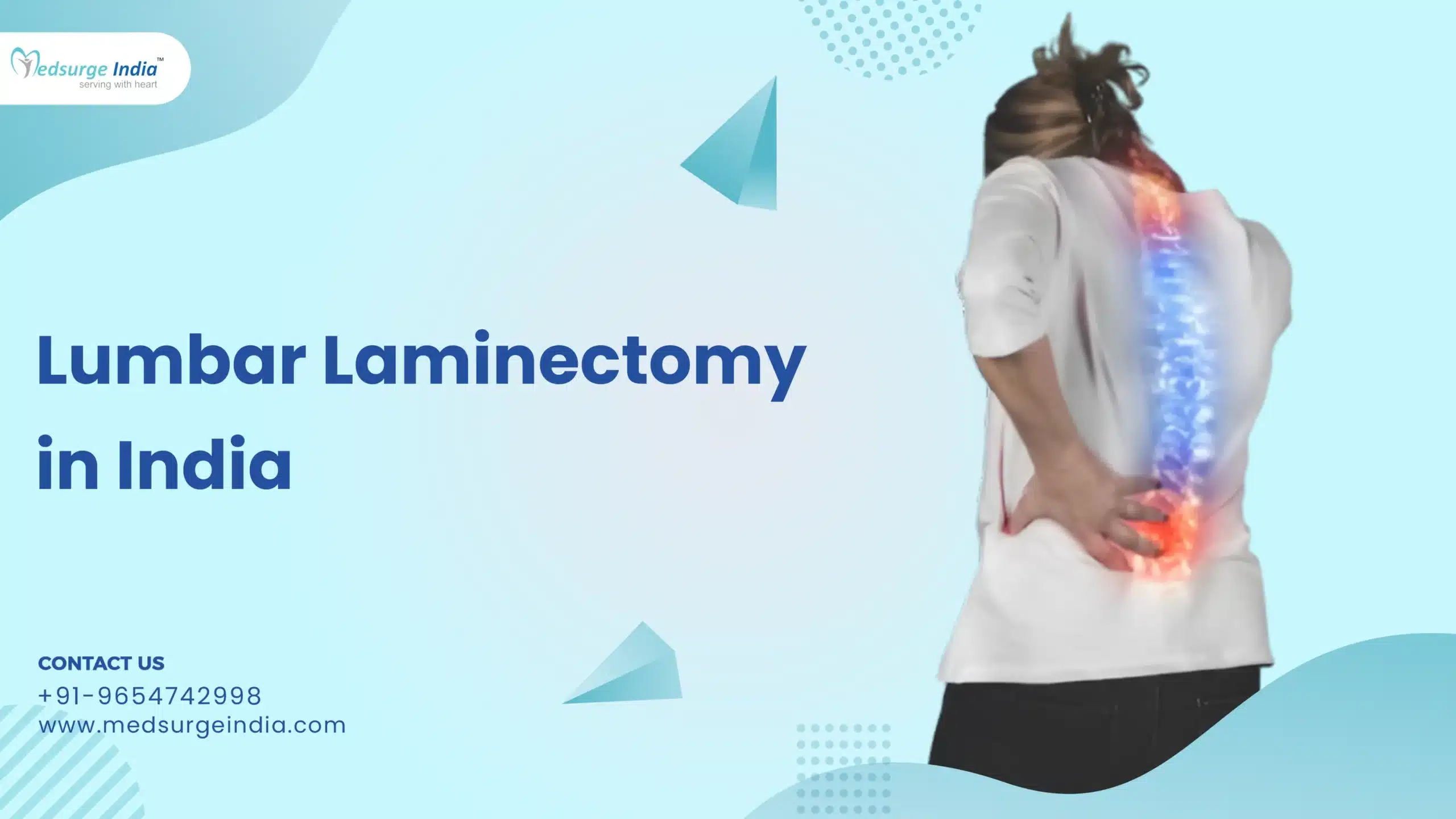Lumbar Laminectomy Cost in India
Unlock Exclusive Discount : Your Gateway to Premium Healthcare with Medsurge India Health Value Card.

Unlock Exclusive Discount : Your Gateway to Premium Healthcare with Medsurge India Health Value Card.


Lumbar Laminectomy Cost in India starts from ₹55,000 and ₹2,10,000 ($660 to $2,400 USD). The cost of care varies from case to case and a specialist examination is recommended to assess the appropriate treatment procedure/approach. The cost & quality of care, including the treatment process, the room category, and many other factors, are also influenced by several external factors.
| Countries | Cost |
| India | $3,000 to $8,000 |
| United State | $77,000 |
| Australia | $20,000 to $35,000 |
| Russia | $4000 to $20,000 |
| UAE | $12,000 to $20,000 |
The cost of lumbar laminectomy cost in India varies depending on several factors. Here are some key factors that can affect the cost of lumbar laminectomy in India:
A lumbar laminectomy is a surgical intervention conducted by a spine specialist aimed at alleviating pressure on a spinal nerve in the lower back. This procedure is also referred to as spinal decompression, as it involves the removal of tissue that is exerting pressure on a nerve. The tissues that can cause nerve compression in the lumbar region may include bone formations, such as osteophytes, and/or disc material, such as herniated discs.
Lumbar laminectomy can be categorized based on the extent of lamina removal and the method employed to alleviate neural compression. The types include:
Bilateral laminectomy: This procedure involves the removal of the lamina from both sides of the affected vertebra, which may include the widening of the intervertebral foramina and/or the excision of surrounding tissue and bone.
Unilateral laminotomy: This technique entails the removal of either a portion or the entirety of the lamina on one side of the affected vertebra, with or without the excision of adjacent tissues.
Unilateral laminotomy can also be performed using an endoscope, a minimally invasive approach that necessitates a smaller incision than traditional open surgery. Although minimally invasive techniques may help preserve more tissue and bone and shorten recovery time, the success rates for both open and minimally invasive decompression procedures are generally comparable.
In certain cases involving lumbar vertebrae, the facets may be partially or entirely excised, leading to the consideration of vertebral fusion to maintain stability.
Laminectomy is typically advised for patients who suffer from symptoms such as pain, weakness, or numbness in the spine, which arise from various spinal conditions that exert pressure on the spinal cord or nerves.
Conditions that may warrant laminectomy include:
The suggested lumbar laminectomy symptoms are:
Your physician will address your medical history and perform a physical examination to diagnose spinal stenosis. To detect the underlying cause, several imaging tests are also required.
Tests on Imaging
An intravenous line is inserted in the arm, and the effects of anesthesia and its complications will be explained by an anesthesiologist. Your surgeon would ask for a medical history consisting of allergies, medications, history of bleeding, reactions, and previous operations. Anesthesia is given to the patient so that he or she can sleep through the surgery.
Know More:- Top 10 Spine Surgeons in India
Medusrge India is a reputable medical tourism provider that has successfully assisted numerous patients worldwide. Our primary goal is to identify the most suitable medical solutions tailored to your specific needs, offering a curated list of qualified and esteemed doctors and healthcare facilities to address your health concerns.
We also help develop treatment plans for you that align with your financial considerations. Furthermore, we support patients in acquiring travel permits, medical visas, and other necessary documentation. If you or a loved one are seeking radioactive iodine therapy in India, please feel free to contact us.
Recommended: Laminectomy for Spinal Stenosis
A: The condition may be treated by a neurosurgeon or orthopedic surgeon who is trained and has experience in spinal surgery.
A: Usually, the patient will be released within 24 hours. The hospital stay may be up to 3 to 5 days if the laminectomy operation is paired with a spinal infusion.
A: Patients can get relief from pain after surgery and be able to do regular activities. In certain cases, however, depending on the underlying cause, there are chances of reoccurrence in the same or adjacent disc.
A: The ruptured and damaged part of the disc is removed only during surgery, which, depending on the degree of stenosis, accounts for 10 to 20 percent.
A: The hospital stay is usually 24 hours and, depending on the discomfort, with some orders, the patient will return to work within a week or two. For up to 6 months, strenuous tasks such as bending and moving objects should be avoided.
A: Laminectomy is associated with the risks of any surgical procedure and some procedural-specific risks. The treatment has some short- and long-term risks.
A: As soon as the patient is stable, the surgeon recommends postoperative mobility, usually after 24 hours. The first workout after surgery, followed by physical therapy exercises, would be walking.
By using our site, you agree to our Terms and Conditions, Privacy Policy and Refund Policy. Medsurgeindia does not provide medical advice, diagnosis, or treatment. The information provided on this site is designed to support, not replace, the relationship that exists between a patient/site visitor and his/her existing physician. We also Accept International Payments.

Copyright © 2025 NSM ONLINE SOLUTIONS PRIVATE LIMITED. All rights reserved.